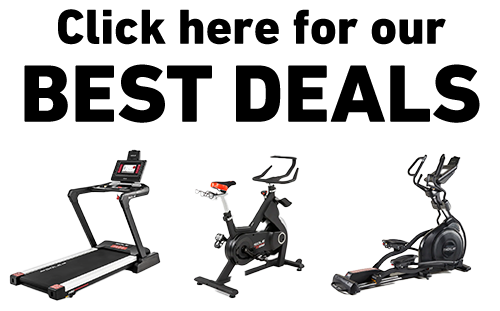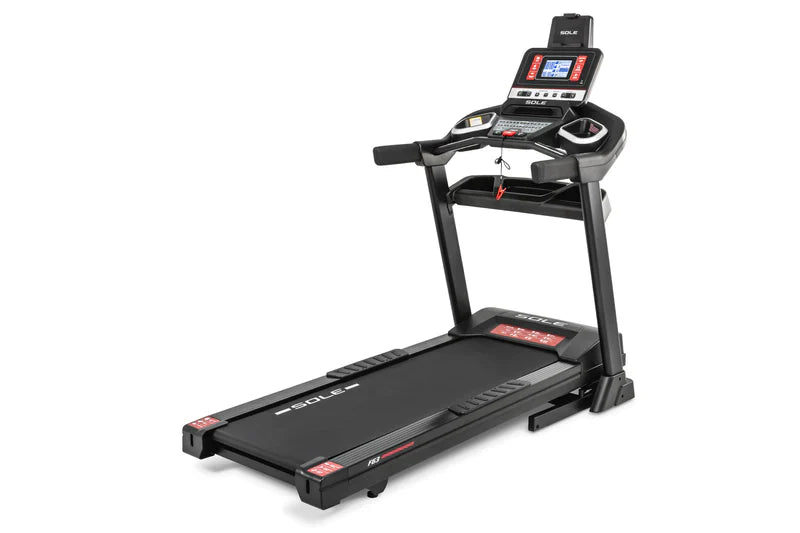Key Takeaways
- Common reasons treadmills stop include motor overheating, belt tension issues, and power supply problems.
- Straightforward troubleshooting steps, like adjusting belt tension and checking the power source, can resolve most treadmill issues.
- Systematic maintenance, such as lubricating the belt and cleaning the motor area, prevents frequent stops and significantly prolongs treadmill life.
- Ensuring your treadmill is plugged into a dedicated circuit prevents power supply issues that cause unexpected shutdowns.
- SOLE treadmills prevent common stopping issues through commercial-grade 3.0–4.0 HP motors with thermal management, precision belt systems that maintain proper tension.
Understanding Treadmill Stopping Issues
Mid-workout treadmill stops are among the most frustrating fitness equipment problems.
These interruptions disrupt your training rhythm and compromise your momentum.
However, most treadmill issues are easily resolved with proper troubleshooting knowledge. Treadmills are generally reliable machines, but like any mechanical equipment, they need maintenance and occasional troubleshooting.
|
Award-Winning Commercial-Grade Treadmills for Your Home
Why Choose SOLE: ✓ Commercial-grade steel frames with up to 4.0 HP motors 30-Day Money-Back Guarantee: Love it or return it, no questions asked. |
Common Causes Why Your Treadmill Stops

Loose treadmill belts create slippage issues that interrupt workouts; regular tension monitoring prevents these disruptions.
Motor Overheating
One of the most frequent reasons treadmills stop is motor overheating. When the motor operates too hot, it will shut down automatically to prevent permanent damage. Intensive use or inadequate lubrication can cause this condition.
Belt Tension Issues
The belt on your treadmill is critical for proper operation. Too tight or too loose, and the belt may slip or cause friction, leading to sudden stops. Wear and deterioration can also cause the belt to become misaligned.
Power Supply Problems
Power issues are another frequent cause. Faulty outlets, loose connections, or overloaded circuits can disrupt the treadmill's operation, causing it to stop unexpectedly.
Overloaded Circuit
Connecting your treadmill to a circuit that can't handle the electrical load can result in intermittent shutdowns. Treadmills consume significant power, so it's essential to have them connected to a dedicated circuit.
Worn-Out Motor
If your treadmill's motor is aging or malfunctioning, it may not be able to meet your workout demands. A struggling motor often causes stops as it overheats or fails to generate sufficient power.

Adequate ventilation prevents treadmill motors from overheating during intensive training sessions.
How to Fix a Treadmill that Keeps Stopping
Resolve Overheating Issues
Allow the motor to cool down between workouts. Make sure the treadmill is in a well-ventilated area, and check for any obstructions around the motor. Lubricate the treadmill according to the manufacturer's instructions to reduce friction.
Adjust Belt Tension Properly
If the belt is improperly tensioned, adjust it systematically. Most treadmills have adjustment bolts at the back—turn them clockwise to tighten or counterclockwise to loosen. Make small adjustments and test the belt after each modification so that it moves smoothly.
Check the Power Source Thoroughly
See if your treadmill is connected to a functioning outlet and inspect the power cord for any damage. If your machine stops after a few minutes, consider connecting it to a different outlet or using a surge protector.
Prevent Circuit Overloading
Check your treadmill and make sure it’s the only device connected to the circuit. Treadmills require substantial power, so avoid sharing the outlet with other high-demand appliances like heaters or large electronics.
Replace or Repair the Motor
If the motor continues to overheat or the treadmill stops despite regular maintenance, it may need professional service or replacement.
For SOLE treadmills, our lifetime warranty on the motor keeps your treadmill protected if a replacement is necessary.
Tips to Prevent Future Problems

Proactive maintenance strategies prevent most treadmill stopping issues while extending equipment lifespan and maintaining peak performance.
Preventive maintenance can significantly reduce treadmill issues. Here's how to keep your treadmill operating optimally:
Essential Maintenance Procedures
- Lubrication & Cleaning: Lubricate the belt every 3 months to prevent friction and reduce strain on the motor. Clean the belt and motor area regularly to prevent dust accumulation
- Calibrate Regularly: Systematic calibration keeps your treadmill's belt and motor operating in perfect harmony
- Inspect for Wear & Deterioration: Check the belt and motor every few months for signs of wear. Early problem identification can save you from more extensive repairs later
Prevent Interruptions with Proven Solutions
Treadmill stoppages are disruptive, but most issues, whether it's overheating, belt problems, or power supply concerns, can be resolved with systematic troubleshooting.
Consistent maintenance is essential for avoiding frequent stops and keeping your workouts smooth and effective. With proper care, you'll keep your treadmill operating efficiently for years of reliable service.
Choose SOLE for Superior Treadmill Reliability

SOLE's commercial-grade engineering and comprehensive warranties provide the reliability and support needed for years of trouble-free operation.
SOLE treadmills such as the F85, F89, F63, F65, and ST90 are engineered to prevent the common stopping issues that plague consumer-grade equipment.
Our commercial-grade 3.0–4.0 HP motors feature advanced thermal management systems that prevent the overheating shutdowns common in inferior treadmills.
These powerful motors maintain consistent performance even during intensive training sessions without the automatic shutdowns that disrupt your workouts.
SOLE's precision belt tensioning systems and high-quality 2-ply commercial belts eliminate the slippage and misalignment issues that cause sudden stops. Our belts come pre-lubricated and maintain proper tension longer than standard belts, reducing the maintenance frequency that contributes to stopping problems in other brands.
The robust electrical systems in our treadmills handle power fluctuations and demanding electrical loads without the circuit sensitivity that causes consumer treadmills to shut down unexpectedly.
Our reinforced power connections and surge protection prevent the power supply issues that interrupt workouts on lesser equipment.
Most importantly, our lifetime warranties on frames and motors from the F80 to the TT8 treadmills mean that if stopping issues do occur, you're completely protected.
Our treadmills require less frequent lubrication, maintain belt alignment longer, and operate more reliably than alternatives that require constant adjustments and repairs.
Frequently Asked Questions (FAQ)
Why does my treadmill stop suddenly during a workout?
Treadmills stop suddenly due to several common reasons. The most frequent cause is motor overheating. When the motor becomes too hot, it will shut down automatically to prevent permanent damage. Other causes include belt tension issues, power supply problems, and overloaded circuits.
How can I fix a treadmill that keeps stopping?
To fix a treadmill that keeps stopping, start by allowing the motor to cool down if it's overheating. Make sure the treadmill is in a well-ventilated area and check for any obstructions around the motor. Next, adjust the belt tension if it's improperly set—most treadmills have adjustment bolts at the back. Additionally, inspect the power source for any damage and see if the treadmill is connected to a functioning outlet.
Why does the treadmill belt stop moving when I step on it?
The treadmill belt may stop moving when you step on it due to inadequate or misaligned belt tension. If the belt is improperly tensioned, it may cause friction or slippage, which can result in the treadmill stopping when loaded with user weight.
What should I check if the treadmill won't start again after stopping?
If your treadmill won't start again after stopping, begin by checking the power source—make sure it's connected to a functioning outlet and there's no damage to the power cord. Verify that the safety key is properly inserted. You should also inspect the circuit breaker to see if it needs resetting.
How often should I lubricate my treadmill belt?
You should lubricate your treadmill belt every 3 months to prevent friction and reduce strain on the motor. Regular lubrication is essential for keeping the belt and motor working optimally. SOLE treadmills feature console indicators that alert you when lubrication is needed, while our pre-lubricated belts require less frequent maintenance than standard belts, reducing the upkeep needed to prevent stopping issues.



Leave a comment
This site is protected by hCaptcha and the hCaptcha Privacy Policy and Terms of Service apply.